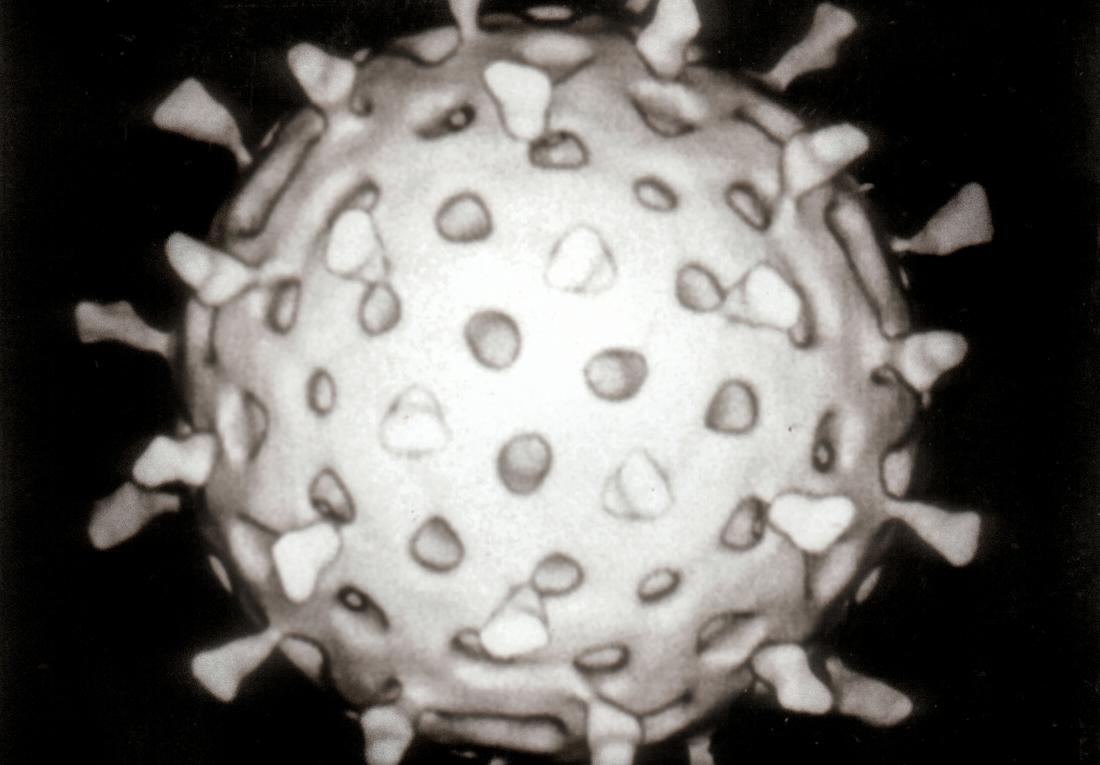Viruses are small, rapidly replicating, infectious agents that can only survive within the cells of other organisms.
They can be found in every ecosystem on earth and can infect all lifeforms.
Capable of causing thousands of conditions — from the common cold to the Crimean-Congo hemorrhagic fever — viruses are as successful as they are deadly.
Using their spectacularly successful traits, scientists from Cardiff University in the United Kingdom are currently investigating ways to turn viruses against cancer.
The researchers have successfully “trained” viruses to recognize ovarian cancer and kill it without harming any healthy tissue.

Viruses (an example of which is shown here) have a bad name, but can they be used therapeutically?
Image credit: Graham Beards
Viruses are small, rapidly replicating, infectious agents that can only survive within the cells of other organisms.
They can be found in every ecosystem on earth and can infect all lifeforms.
Capable of causing thousands of conditions — from the common cold to the Crimean-Congo hemorrhagic fever — viruses are as successful as they are deadly.
Using their spectacularly successful traits, scientists from Cardiff University in the United Kingdom are currently investigating ways to turn viruses against cancer.
The researchers have successfully “trained” viruses to recognize ovarian cancer and kill it without harming any healthy tissue.
Retraining viruses
The new study builds on similar research from recent years. Co-lead author Dr. Alan Parker notes:
“Reprogrammed viruses are already being used in gene therapy procedures to treat a range of diseases, demonstrating they can be trained from being life-threatening into potentially lifesaving agents.”
But, in the past, it was not possible to make the viruses selective enough. Such a lack of selectivity meant that they would also invade healthy cells and cause them damage.
In their new paper, which is now published in the journal Clinical Cancer Research, the researchers outline a new approach that avoids this problem.
As Dr. Parker explains, “We’ve taken a common, well-studied virus and completely redesigned it so that it can no longer attach to non-cancerous cells but instead seeks out a specific marker protein called alpha-v-beta-6 (αvβ6) integrin, which is unique to certain cancer cells, allowing it to invade them.”
Evil turned good
Once a virus has entered a cell, it hijacks the cellular machinery to make thousands of copies of itself. Then, the cell ruptures and the new viruses are free to infect neighboring cells. In the retrained viruses, the same occurs, but only cancer cells are invaded and ruptured.
The virus’s ability to replicate so quickly makes them a formidable pathogen, but once they have been repurposed, their rapid multiplication becomes a therapeutic benefit.
As an added bonus, the virus triggers an immune response and helps the immune system to recognize, target, and destroy the cancerous cells.
“In this case, we introduced the reprogrammed virus to ovarian cancer, which it successfully identified and destroyed. This is an exciting advance, offering real potential for patients with a variety of cancers.”
Dr. Alan Parker
In the future, the researchers hope to tweak their viral weapon further. They want to train the virus to recognize a protein component that is shared by ovarian, breast, pancreatic, lung, and oral cancers.
Also, farther down the line, the scientists hope to make the virus even more powerful. They believe that by tinkering with its DNA, they might be able to program it to produce and release antibodies or other anticancer compounds while it is housed within the cell.
These initial studies were carried out on a mouse model of ovarian cancer, but within the next 5 years, they hope that the reprogrammed viruses will reach the clinical trials stage.
Source:-medicalnewstoday
